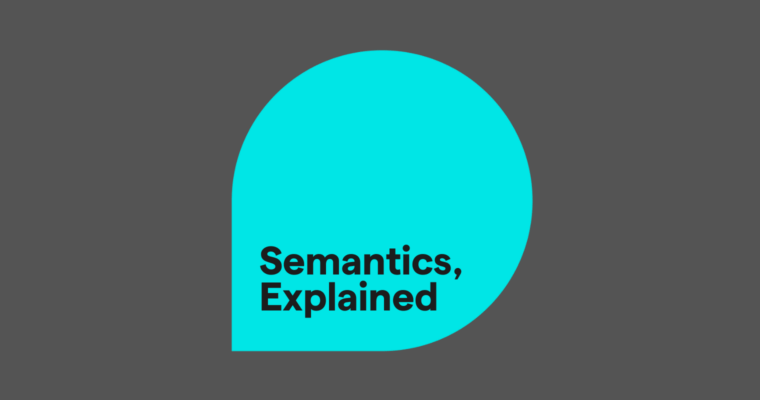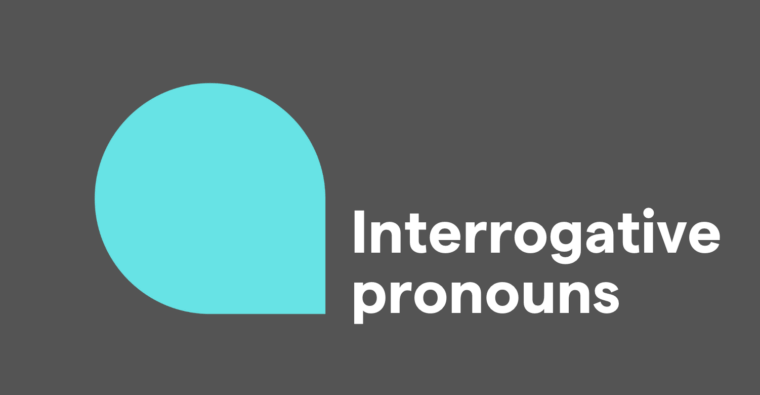
Key takeaways:
- Syntax refers to the particular order in which words and phrases are arranged in a sentence.
- Small changes in word order can dramatically alter the interpretation of a sentence.
- Understanding syntax improves sentence structure and makes communication clearer.
Ever rearranged furniture and noticed how it completely changes the feel of a room? That’s what syntax does for sentences. Syntax is the arrangement of words and phrases in a specific order, shaping meaning and impact.
For example, “she only loves pizza” versus “only she loves pizza”—same words, different meanings. If you change the position of even one word, you may change the meaning of the entire sentence.
This guide breaks down syntax’s fundamental rules and types with clear examples to help you grasp the concept. Let’s start with a closer look at what syntax means.
Table of contents
What is syntax in linguistics?
The basic rules of syntax in English
Syntactic patterns with examples
Sentence structures with syntax examples
What’s the difference between syntax and diction?
What is syntax in linguistics?
Syntax in linguistics refers to the arrangement of words and phrases to create meaningful sentences. It involves the structure of sentences, focusing on word order and grammatical rules like subject-verb agreement, as well as the proper placement of direct and indirect objects.
Key aspects of syntax include:
- Word order: The sequence in which someone arranges words in a sentence
- Grammar rules: Include subject-verb agreement and the placement of objects
- Phrases: Multiple words acting as a single unit in a sentence, often explored through sentence diagramming
- Sentence hierarchy: Important for understanding complex sentence structures
- Sentence interpretation: Can be significantly altered by word placement
Syntax plays a critical role in how sentences function. The arrangement of words can alter both subtle nuances and major meanings. For instance, changing word placement can completely shift the interpretation of a sentence, a crucial understanding for writers aiming to convey shifts in meaning through structure.
Below are several examples showing how changing word placement can alter the meaning of a sentence.
Syntax examples
| Sentence | Meaning |
| Only Batman fights crime. | Batman is the only person who fights crime. No one except Batman fights crime, not even Superman. |
| Batman only fights crime. | Fighting crime is the only thing Batman does. He doesn’t work; he doesn’t shower—fighting crime is all he does. |
| Batman fights only crime. | Batman doesn’t fight anything except crime. He doesn’t fight Alfred or Robin; he doesn’t fight the dry cleaner if they accidentally stain his shirt. Crime is the only thing he fights. |
The basic rules of syntax in English
If you want to get technical with the English language, there are dozens of rules about syntax you can study. However, these can get confusing, and some require an expert understanding of English. Below, we list only the five basic rules of syntax in English, which are enough for constructing simple sentences correctly.
- All sentences require a subject and a verb. However, imperative sentences (commands) do not need to include their subject because it’s assumed to be the person to whom they direct the sentence.
- A single sentence should include one main idea. If a sentence includes two or more ideas, it’s best to break it into multiple sentences.
- The subject comes first, and the verb comes second. If the sentence has objects, they come third, after the verb.
- Subordinate clauses are sentence parts with a subject and verb that cannot stand alone. They add detail to the main part of the sentence.
- Adjectives and adverbs usually go in front of the words they describe. If multiple adjectives describe the same noun, use the proper adjective order, known as the royal order of adjectives.
Learning these fundamentals is the first step in understanding syntax. After that, you’ll be able to tackle more advanced topics, like the types of syntax.
Syntactic patterns with examples
Before we get into sentence structures, let’s discuss syntactic patterns. In English, syntactic patterns are the acceptable word orders within sentences and clauses. The order in which you place words or strings of words, such as direct objects, indirect objects, or prepositional phrases, depends on the specific type of word you want to use.
Complements and adverbials
Complements are words or phrases that describe other words in a sentence or clause. The difference between complements and other modifiers is that complements are necessary for the meaning of a sentence and cannot be removed. There are three types of complements:
- Subject complements: Describe the subject (“That test was hard”)
- Object complements: Describe the object (“That test made me angry”)
- Adverbial phrases: Describe the verb (“That test took longer than usual”)
Adverbials aren’t always complements. While adverbial complements are necessary for a sentence’s meaning, modifier adverbials can be removed without changing the meaning. Adverbials are usually composed of single adverbs, prepositional phrases, or noun phrases related to time.
Now, let’s look at the seven types of syntactic patterns so you can make proper sentences and clauses with whatever words you want.
Subject → verb
This is the standard syntactic pattern, including the minimum requirements of just a subject and verb. The subject always comes first.
Subject → verb → direct object
If the verb is transitive and uses a direct object, the direct object always goes after the verb.
Subject → verb → subject complement
The subject complement comes after the verb. Subject complements always use linking verbs, like be or seem.
Subject → verb → adverbial complement
Like subject complements, adverbial complements come after the verb (if there are no objects). Be careful because single adverbs can sometimes come before the verb; however, these are not complements.
Subject → verb → indirect object → direct object
Some sentences have both a direct object and an indirect object. In this case, the indirect object (me) comes right after the verb (gave), and the direct object (ball) comes after the indirect object. Keep in mind that objects of prepositions do not follow this pattern; for example, you can say, “The dog gave the ball to me.”
Subject → verb → direct object → object complement
Object complements come after the direct object, similar to other complements.
Subject → verb → direct object → adverbial complement
When the sentence uses a direct object and an adverbial complement, the direct object comes first, followed by the adverbial complement. In this syntax example, up is the adverbial complement because it describes how the dog perked its ears.
Sentence structures with syntax examples
You can use the syntactic patterns above to form stand-alone sentences and individual clauses within a sentence. Both independent and subordinate clauses can be mixed and matched to form advanced sentences, which is ideal if you want to learn how to write better sentences.
There are only four types of sentence structures that represent different combinations of independent and subordinate clauses.
Simple
This is a sentence with just a single independent clause—the minimum requirement for a complete sentence.
Complex
A complex sentence combines an independent clause with one or more subordinate clauses.
Compound
A compound sentence has two independent clauses joined by a coordinating conjunction or a semicolon.
Compound-complex
Complex-compound sentences include two independent clauses combined with one or more subordinate clauses.
Using a variety of sentence structures can improve your paragraph structure. While repeating the same structure throughout a paragraph is technically correct, it can become monotonous for the reader. That’s why it’s helpful to consider syntax early in the writing process—even when outlining.
What’s the difference between syntax and diction?
Syntax is often confused with diction, but they are distinct. Diction refers to word choice, like describing a room as “clean” or “spotless,” which have similar meanings but subtle differences. Syntax concerns word arrangement and order, constrained by grammar rules.
Diction directly affects writing style; Mark Twain’s simple words contrast with James Joyce’s sophisticated vocabulary. Syntax also shapes style, influencing sentence structure and length.
Authors use simple or elaborate sentences and can manipulate clause order to affect the interpretation of their words. While authors have more freedom in choosing words (diction), the rules of syntax mean that sentence structures have more limitations.
Syntax in literature
In skilled hands, syntax transforms a bland sentence into a legendary quote. Paired with literary devices like antithesis, chiasmus, or paradox, it can make writing truly stand out. Consider these famous examples:
Syntax in literature examples
| Quote | Author | Analysis |
| “It is a far, far better thing that I do than I have ever done; it is a far, far better rest that I go to than I have ever known.” | Charles Dickens, A Tale of Two Cities | Dickens mirrors syntax in multiple clauses to connect past, present, and future events. |
| “Rather than love, than money, than fame, give me truth.” | Henry David Thoreau, Walden | Thoreau’s syntax emphasizes truth by placing it last. Reversing the order weakens the impact. |
| “People generally see what they look for, and hear what they listen for.” | Harper Lee, To Kill a Mockingbird | Parallelism strengthens this sentence, making it both poetic and memorable. |
| “The fool doth think he is wise, but the wise man knows himself to be a fool.” | William Shakespeare, As You Like It | Shakespeare’s syntax-driven antithesis underscores the contrast between wisdom and foolishness. |
| “I may not have gone where I intended to go, but I think I have ended up where I needed to be.” | Douglas Adams, The Long Dark Tea-Time of the Soul | Placing the clause “where I intended to go” first emphasizes the unpredictability of the journey. |
Simplifying syntax for clear and effective writing
Understanding syntax is essential for crafting clear, impactful sentences. By refining how words and phrases work together, you can enhance the quality of your writing across all styles—academic, professional, creative, or casual.
Elevate your writing with Grammarly
Choosing the right syntax can be tricky. Grammarly makes it easy. Its instant suggestions for sentence clarity, structure, and tone can help you craft sentences that mean exactly what you intend. Try Grammarly for free.
Syntax FAQs
Below, we answer some frequently asked questions about syntax, its differences from related concepts, and its role in sentence formation.
What is syntax vs. grammar?
Syntax is the study of how words are arranged to form sentences, focusing on the structure and rules of sentence formation. Grammar is the broader set of rules that includes punctuation and word usage beyond just syntax.
What is a simple syntax?
Simple syntax refers to a basic sentence structure that follows an obvious subject-verb-object pattern, making the sentence clear and easy to understand.
What is the difference between syntax and semantics?
While syntax defines the rules for sentence formation, semantics focuses on the meaning of sentences, phrases, and words. Syntax ensures a sentence is grammatically correct, while semantics ensures it makes sense in context.
What is the difference between sentence structure and syntax?
Syntax refers to the rules for combining words and phrases, while sentence structure refers to how these components are organized. Syntax provides the framework, and sentence structure is the result of applying those rules.





